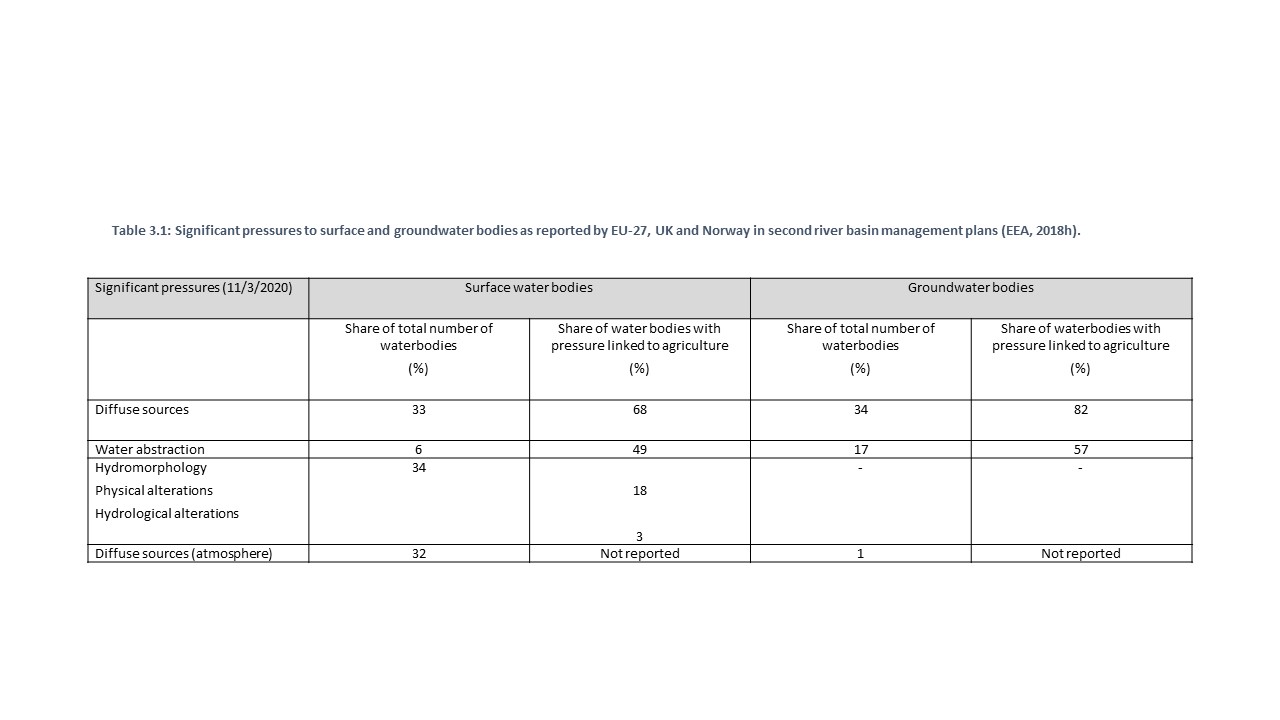Post a comment on the text below
Diffuse pollution and water abstraction pressures are expected to continue in response to intensive agricultural practices. Climate change increases temperature and alters the supply and demand of water regionally, increasing the need to manage floods and droughts, as well as larger and less predictable seasonal variations. These additional climate impacts exacerbate pollution and abstraction pressures. These changes will impose large additional challenges to manage pressures from water abstraction, nutrients and pesticides, and hydromorphology.
Pressures to the aquatic environment from the agricultural production can be roughly be split into three categories: pollution from diffuse sources, hydromorphological pressures, and from water abstraction. In this chapter, we discuss the status and trends of those pressures together with their impacts.
As part of the second river basin management plans, EU-27, UK and Norway reported on significant pressures to surface and groundwater bodies (Table 3.1). Significant pressures are reported when water bodies fail to achieve good status, and for most pressures the attribution to agriculture is to more than 50% of the water bodies affected.

Both crop and livestock production are associated with pollution and water abstraction pressures to the aquatic environment. Crop production requires application of synthetic and organic fertilisers, pesticides, herbicides and other plant protection products, as well as irrigation water to support and optimise crop productivity. Manure from livestock production is an organic fertiliser both used as a crop fertiliser and it is spread by grazing animals. In contrast to crops, livestock rearing does not require large inputs of water. Hydromorphological pressures are associated with the over all agricultural activity, where alterations to the natural river has often been made with the aim of optimising the agricultural production.
Soil management operations and cropping practices are important for managing risks to the water environment. Overall, disturbances to soil structure and functions may reduce its capacity for efficient nutrient recycling and natural water storage capacity. Hence, optimising soil for the agricultural production through drainage is a considerable hydromorphological pressure, as is alteration of rivers to enable better water storage for irrigation.
You cannot post comments to this consultation because you are not authenticated. Please log in.


